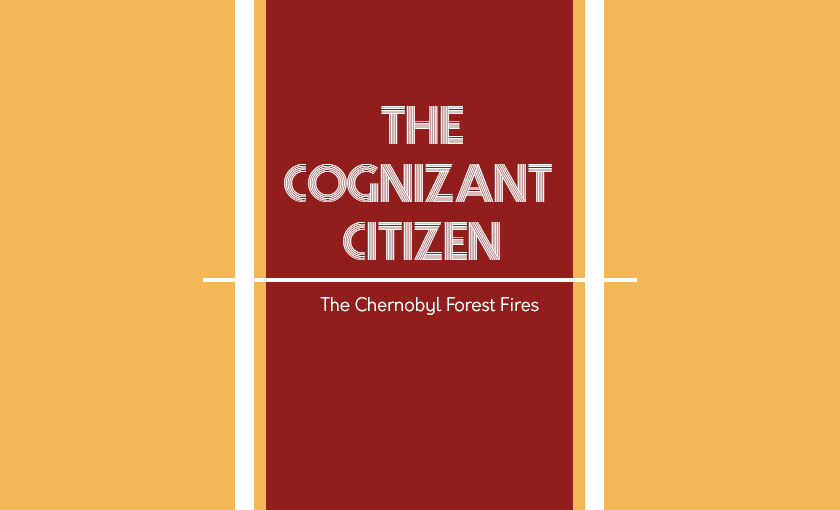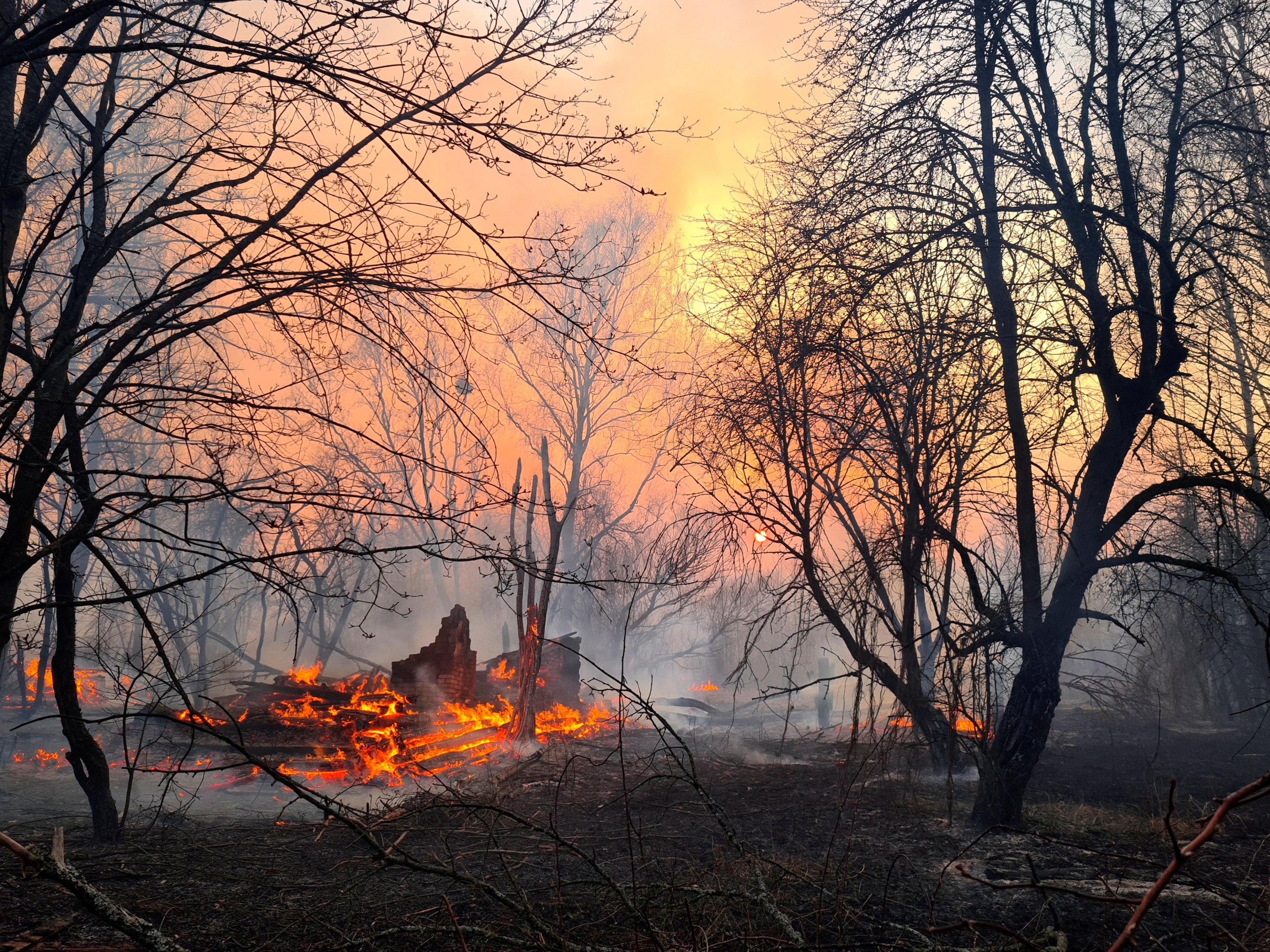
The Chernobyl disaster: thirty-four years ago, on 26th April 1986, the second-most severe nuclear catastrophe took place at Chernobyl Nuclear Power Plant, Ukraine.
The explosion of the Number Four RMBK reactor occurred during testing at low power. Due to lack of safety measures, the explosion and fire caused the demolishing of the reactor building—fuel containing uranium overheated and melted the barricades allowing untreated chemicals to escape. Extremely unstable radioactive elements including iodine-131, caesium-137, strontium-90, and plutonium-241 scattered into the atmosphere.
Data received from IAEA said that the initial explosion caused the death of two working men at the site and 52 people were hospitalised. Within 36 hours of the blast, the entire population of 49,630 people of Pripyat (three kilometres from the plant) was evacuated. In three months of the incident, a total of almost 200,000 people were relocated from neighbouring areas which were contaminated with the hazardous chemicals.
Just as humanity evacuated from the nearby towns, all trees, animals and other living creatures died soon after due to the chemicals in the air. However, over the years, vegetation and fauna regained its place in the deserted land. Trees continue to grow in the soil rich in arson and caesium, and animals continue to breathe the air that records an ionisation radiation level of 5.6 roentgen per second.
Since the nuclear disaster, forest fires have been a common sight in Chernobyl. Springs and summers tend to experience most of these fires. In 2016 leading Chernobyl researcher Dr Timothy Mousseau said that it is a great potential for another catastrophe to occur in the forests in the Exclusion Zone. This, he claimed was due to the high levels of contamination in the woods.
The past fires have been relatively small; hence, did the negligible effect on the environment. RFERL quoted Mousseau saying, “this dead organic matter on the surface of the soil is highly radioactive.” He added, “when it dries out, it becomes a big fire hazard and this fuel load is what generates catastrophic forest fires.”
In 2018, then presiding Ukrainian Prime Minister said in a speech that there is “no threat” to the Chernobyl land. “The radiation levels are safe and we don’t need to worry about it,” Hroysman said in response to the worried nuclear-safety experts.

The Current Situation
On April 4th, 2020, a major fire broke out near the isolated village of Vladimirovka, located in the Chernobyl Exclusion Zone.
The forest fire, which has been raging on for more than a week now, has spread to within a kilometre of the Chernobyl power plant. Despite firefighters struggling to extinguish the several fires burning inside the 18-mile ‘Exclusion Zone’, the forest fires show no sign of reduction.
The fires are the largest ever to hit the area according to locals. Another possible reason is the early spring this year. The climatic temperature of the place has been higher than usual, acting as a catalyst to increase the intensity of the fire.
Earlier, on 5th April, the acting head of Ukraine’s state ecological inspection service, Yegor Firsov said in a Facebook post that “there is bad news—in the centre of the fire, radiation is above normal.” Using a Geiger counter, the readings of the device showed 2.3 when the reasonable condition is usually 0.14. This reading was taken only in the area of the spiking fires. A lot of tension was created as the radiation being sixteen times more than usual may severely cause damage to the living people around the area. But later, Government officials denied his observation and said the levels in the area were “within normal limits,” and Mr Firsov immediately withdrew his statements.
On the day of the breakout, Ukrainian authorities stated that the fire covered an area of 20 hectares, but the NGO Greenpeace cites satellite images showing the coverage area to be around 12,000 hectares. Since then the fire has just spread through the 30 km exclusion zone set up around the site of the Chernobyl power plant.
Greenpeace also stated that according to satellite images taken on Monday, the area of the most massive fire has reached 34,400 hectares and that a second fire, that is currently spread across 12,600 hectares is just one kilometre away from the worst nuclear disaster in history.

Rashid Alimov, head of energy projects at Greenpeace Russia, stated that fires, fanned by the wind, could disperse radionuclides, atoms that emit radiation, in the surrounding areas. “A fire approaching a nuclear or hazardous radiation facility is always a risk.” he quoted.
BBC News reported that over 400 firemen and 100 fire engines were deployed to the site to contain the fire using numerous helicopters. However, the acting head of the State Agency of Ukraine on Exclusion Zone Management told the Associated Press that though they “have been working all night, digging firebreaks around the plant to protect it from fire, we cannot say the fire is contained.”
The smoke from the fire had been blowing towards Russia and Belarus for most of the week, but now it has shifted towards Kyiv, the capital of Ukraine.
Due to the global pandemic of coronavirus, Ukraine has been on lockdown. “We are lucky to have quarantine measures in place now,” an expert from the environmental group Ecodiya, Olena Muskin told The New York Times. Winds can raise hot particles in the air along with ash and billow towards populated areas. “People stay at home, walk less and wear masks,” she added, saying it is an unexpected blessing to one and all.
On 14th April, the storming blazes were extinguished by early morning rains in the Exclusion Zone. The Guardian confirms that the state emergency service reported: “there are no open flames, there was a slight smouldering of the forest floor.”
—Written by Tanya Jain and Vaishnavi Karkare for MTTN
—Featured image by Apurva Bandyopadhyay for MTTN
Leave a Reply
You must be logged in to post a comment.